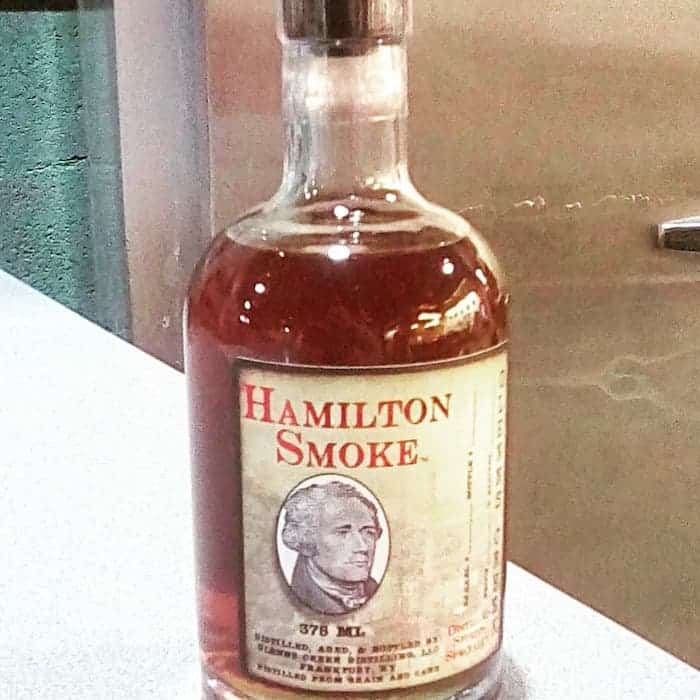Vodka, gin, bourbon and rye, oh my!! In today’s market, if you find yourself in a decent liquor store, you’ll encounter a plethora of these spirits on the shelf. Certainly much more than there was even five years ago. So what is a new distillery to do? Gin and vodka used to be the standard component of a distilleries business model because they could be bottled and ready for distribution in roughly ten days from when the grains arrive. But now, the competition is at its most competitive peak. Now is the ideal time to think outside the box.
While fin may be the easy and most popular option, there are an abundance of botanicals to experiment with for a master distiller with a creative side. The Spirts of French Lick has an award winning aquavit in their portfolio that had four spirits judges in Denver, including myself, believing that it had to be from Scandinavia, in addition to an absinthe distilled in the Swiss style during the prohibition of this misunderstood spirit, and contains 13 botanicals. St, George Spirits in California released the first legal American absinthe after the U.S. ban was lifted in 2007, and several others have followed suit, including Copper & Kings in Louisville, KY.
Brandy and rum both have long, and storied histories in this country. In 1780, Robert Laird recorded the first commercial transaction at the distillery in the tiny community of Scobeyville, NJ, and prior to 1760, George Washington wrote to the Laird family requesting their applejack recipe. Between 1855 and 1914, more than 150 Southern Indiana apple brandy distilleries once roamed the landscape along the creeks, tributaries, and springs that still trickle with limestone water in the southern tier of the Hoosier state. Germain-Robin and Osocalis, both located in California, are making stellar brandies that would make Europeans proud.
Dozens of rum distilleries were established in the colonies, built upon the trade from the West Indies, but declined in the 1800’s as the popularity of whiskey rose. Today, Old New Orleans Rum in Louisiana bills itself as the oldest premium rum distillery in the US. Privateer Rum, located in Ipswich, MA, is reviving the tradition started by their founder’s ancestor, the original Andrew Cabot (1750-1791), who was a merchant, rum distiller and successful American privateer during the American Revolution. Many craft distillers are producing rum as part of their portfolio today.
“Distilled Spirits Specialty” is a lesser known class recognized by the TTB that really opens the door for some creativity and ingenuity because, by its very definition, is non-standard.
Distilled Spirits Speciality
- Distilled spirits not defined under any other class
- Generally, any class and/or type of distilled spirits that contain or are treated with flavoring and/or coloring materials and/or nonstandard blending or treating materials or processes
Glenns Creek Distillery, located in Frankfort, KY, has one such product, Hamilton Smoke, which is distilled from grain, cane, and peat smoked barley, with some hickory wood flavors added. I spoke with Dave Meier regarding the thought process leading up to his creation.

“We had started production of a malt whiskey and had a similar idea to make a Hamilton product that was reminiscent of malt whiskey. The result became Hamilton Smoke. We add additional peat smoked barley to the mash for a smokier flavor. Along the way we had a visitor come in who was doing some experimentation with vodka and hickory wood from his restaurant. We tried his concoction and thought that the hickory might be an interesting addition to the peat smoke flavor. He was kind enough to bring us some nicely charred logs from his restaurant and we began to test the amount of hickory to add to give the product a hint of hickory smoked bacon, but not too much.”
Although “moonshine” has also filled the shelves in recent memory, and rivaling vodka with the choice of flavors, one distillery, Neeley Family Distillery in Sparta, KY, has taken it a step further by creating a Chocolate Truffle Moonshine Cream Liqueur. With an outstanding moonshine base that’s triple distilled from corn and cane following a longer fermentation, it then has natural cream, vanilla, walnut, and chocolate fudge flavoring added to complete a cream liqueur that rivals any on the shelf today.
While bourbon and rye whiskey may be the darlings right now because of the boom that we’re still riding, the United States has a deeper distilling history than just those, and I for one am thrilled to see some craft distillers creating outside the box, and well!!!








